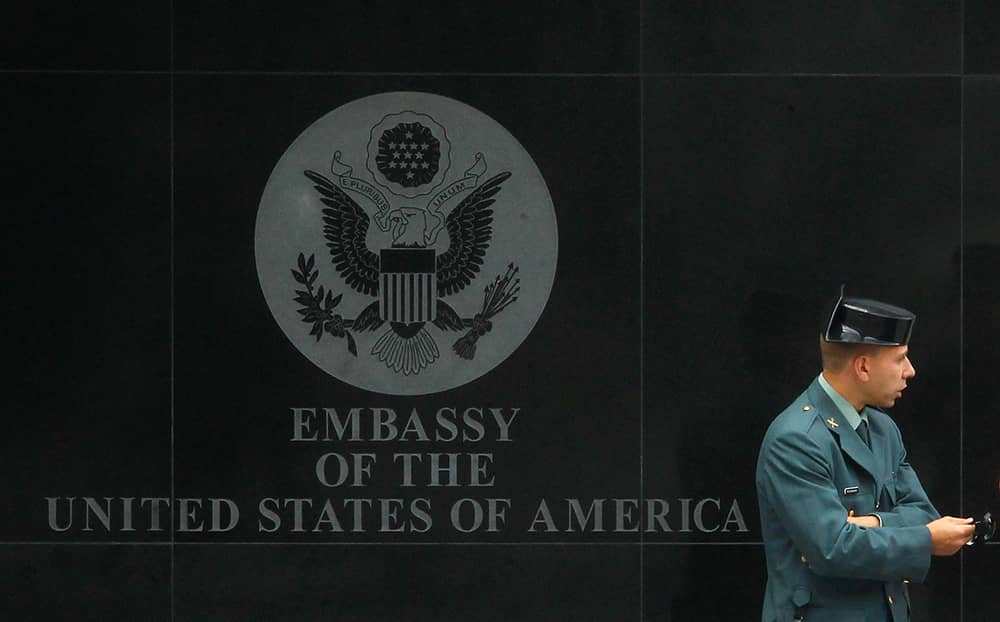I remember when and where al-Qaida declared war on the United States. Sunday evening, February 22, 1998, was chilly and sooty in Cairo where I was a junior diplomat at the US embassy. A lawyer named Montasser al-Zayyat, an embassy contact who represented Islamists, summoned me to his office. He pulled a document off his fax machine and handed it to me. Written in Arabic and titled “Declaration of the World Islamic Front,” it called for jihad against the Crusaders and Jews and was signed by Sheikh Osama bin Laden and others acting under the umbrella of a new organization called al-Qaida. After a short conversation with al-Zayyat, I rushed back to the embassy and translated the declaration. The next morning we cabled it back to Washington; later that week the declaration was all over the international Arabic press. Six months later al-Qaida attacked two US embassies in East Africa and the US tomahawked al-Qaida targets in Khartoum in response. The war had started.
>> Diplomatic Dispatches: Read more from Robert Silverman
Twenty-three years later, here is how Hamas announced its intention to attack Israel. In the mid-afternoon of May 10, Hamas spokesperson Dr. Sami Abu Zuhri posted two videos to his Twitter account warning that Israeli actions at the Al-Aqsa Mosque in Jerusalem would induce “unprecedented repercussions.” Several hours later Hamas launched rockets at Jerusalem; Israel responded with air strikes on Hamas targets in Gaza; and the war had started.
Time flies and technology advances. It’s not only terrorists who have graduated from fax machines and in-person meetings to communicate key developments; diplomats also appreciate the speed and ease of new media.
The question is whether communication advances over the past 20 years have rendered obsolete the official diplomatic report or cable sent from an embassy to headquarters via secure channels. It has been decades since Washington relied on cables for fast-breaking news from overseas. Even reports of sensitive meetings with foreign leaders often do not wait for the full cable version that is reviewed by section chiefs at the embassy and then approved by the ambassador. Often headquarters wants the headline “take-aways” sent via secure email right after the meeting ends.
I am of the generation of diplomats who has worked on both sides of the digital divide and appreciates aspects of both. Good riddance to typing telegrams on an IBM Selectric using cumbersome paper forms backed by carbon copies. I chuckle now to recall an American ambassador who, in the late 1990s, tried to ban the use of email by his officers since he needed to pre-clear all messages emanating from his post.
But there is enduring value to the long-form analysis of a cable written by a foreign diplomat who has spent years studying the language, politics, economics, and society of the host country. Using the cable format signifies that this is “record traffic” which can be easily disseminated and retrieved, thereby causing the drafter to take more care than with an email message. It provides an assurance that the views represented are those of the embassy, not just the individual drafter. (To the delight of historians, the British National Archives have kept the often-humorous handwritten chains of thought and debate that preceded the writing of cables or reflected the responses in London to their content. This is rarely the case with their US counterparts.)
The classic example of impactful cable analysis is George Kennan’s dispatch from Moscow at the start of the Cold War, which Kennan later repackaged in a Foreign Affairs magazine essay titled “The Sources of Soviet Conduct” and published anonymously as “Mr. X.” Kennan wrote the cable in 1946, at the end of his second tour in Moscow and after spending close to 20 years studying Russian and working on Soviet affairs. In it he described the internal contradictions between Russian society and the Soviet regime. The wisest course for US policy, he suggests in the cable, is to contain the spread of communist influence, maintain “the health and vigor of our society,” and wait for the inevitable demise of the Soviet model.
Generations of American diplomats after Kennan have tried to equal the impact and fame of his long telegram. Today, with the greater diversification of inputs into foreign policy-making, Kennan’s kind of policy impact is as likely to originate in a magazine article as in a diplomatic cable. Nevertheless, the depth of practical experience gained over years of intensive work that a diplomat can bring to bear on a foreign country remains irreplaceable.
So the value added by a diplomat in the discursive format of a cable remains a vital source of information at the policymaker’s fingertips. Neither the ad hoc nature of email discussions nor the haiku-like concision of Twitter replaces the carefully drafted diplomatic dispatch. This column aims to provide some examples of such insight in future issues.



